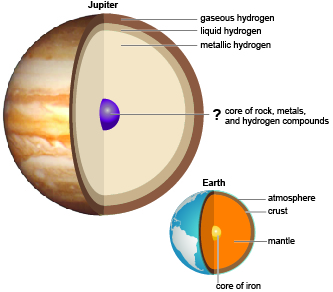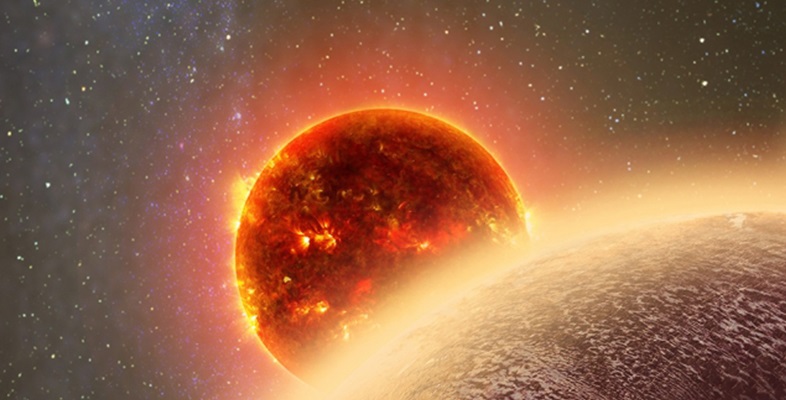4.5 Floating, sinking and planetary structure
One everyday effect related to density is whether something floats or sinks. Polystyrene packing beads float on water because they are less dense than water. Pebbles sink in water because they are more dense than water. Another effect can be observed if you make a traditional salad dressing from vinegar and oil: the denser liquid, vinegar, will sink and the less dense liquid, oil, will float on top of it. In the interiors of Earth and Jupiter, the denser material in each case sinks to the centre (Figure 11).

Generally, both planets and stars behave a bit like salad dressing: the denser material sinks and the less dense material floats. So if a planet is composed of several different materials, they will generally be arranged with the densest material at the centre and the least dense at the surface. Clearly it is not straightforward to make a direct measurement of the composition of the material at the centre of any planet. Scientists are fairly sure from indirect measurements that the Earth has an iron core. This sinking and floating would have taken place when the interior was molten early in Earth’s formation.
